The second generation Soviet IFV (1980)

The BMP, which stands for Boyevaya Mashina or literally "Infantry Fighting Vehicle", was first introduced by the USSR in the 1960s and created a stir in the West. There was nothing to compare at that time, as the M113 and its APCs equivalents has comparatively less armour and a much weaker armament. The IFV concept could be claimed actually both by Germany and USSR, but the latter mass-produced the BMP-1 to an unprecedented level for such kind of armored vehicle. After a consummated success story, as the BMP-1 has been exported to more than 60 countries, it was thought in the 1970s to improve its main armament, a low-velocity, unstabilized 2A28 Grom 73 mm gun (500 m accurate range), as well as obsolescent the ATGM Malyutka (NATO Sagger). Work began in 1972, and the next year the Yom Kippur War showed already that Egyptian and Syrian has been badly hit by .50 caliber machine-gun rounds in the sides and rear. Others were lost to the 106 mm recoilless rifle, so protection was also part of the improvement program. The Sagger was also proven difficult to aim at and guide accurately from the cramped interior of the turret. In fact, Soviet specialists were sent to Syria to gather intelligence and the report led to a new replacement programme in 1974. In between was started the BMP-1P which already had some improvements like smoke grenade launchers on the turret for active concealment, and a new semi-automatically guided AT-4 Spigot/AT-5 Spandrel ATGM system. Later on, some BMP-1s would be upgraded (after ring modifications) with BMP-2 turrets.
Design of the BMP-2
Hull
For the sake of production, both vehicles shared most components but the turret. The hull was always given this famous prismatic shape that helped reduce the armor, which was unchanged, 33 mm at best. Frontal and side protection against contemporary 12.7 mm rounds was offered, although the rear doors were still vulnerable. It could also withstand 20 mm rounds on the frontal arc. The hull was made of welded steel, with the same general configuration, front-right engine (separate compartment), front-left driver which has his own entry hatch above him, with three day periscopes. The center periscope TNPO-170A could be swapped for a TNPO-350B (extended for amphibious operations) or night vision TVNE-1PA scope. A single infantryman was seated immediately behind him, with his own firing port and vision block. Also compared to the BMP-1 there were two rear infantry roof hatches instead of three.Additional peripheral vision was provided by TNPO-170A periscopes, notably in the rear section, which saw six men seated back to back. The two doors are still given built-in fuel tanks, a feature that proved a design mishap in action in Afghanistan and later. The chassis was also vulnerable to mine explosions. Active protection included six 81mm smoke dischargers (three banks of three each side at the rear), and engine exhaust fume extractor device. The smoke dischargers weren't made for defensive operations, as the smoke rounds were launched some 300 m ahead of the vehicle. They were meant to conceal the vehicles during an assault. They could also use HE rounds.
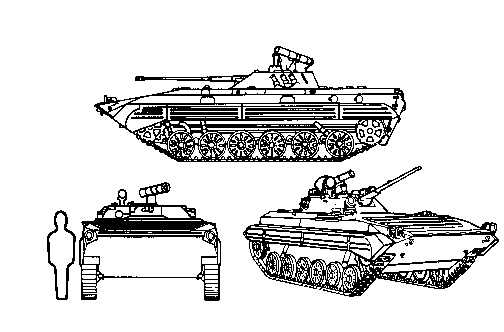
There was also an interior PAZ over-pressure NBC lining and sealing, and an automatic fire suppression system, in the turret, crew and engine compartments. Added to this were installed an engine preheater and a turret extractor fan.
Mobility
The separate compartment housed a new, more powerful diesel to compensate for a ton more of additional weight. This was the diesel UTD-20/3 capable of 300 hp (225 kW) for a Power/weight of 21 hp/tonne. It was basically an improved version of the BMP-1 multifuel engine, with an air inlet and outlet louvers on top of the hull.The whole power unit can be easily replaced in the field. The suspension was still counting on torsion bars, five stamped steel roadwheels per side plus three return rollers. Operational range was about 600 km (370 mi), top Speed 65 km/h (40 mph) on road, 45 km/h (28 mph) off-road and 7 km/h (4.3 mph) while swimming.
Indeed the BMP-2 stays amphibious with little preparation, using hydrodynamic fairings to convert track momentum into water jets. Peacetime regulations obliged to have a working radio set to warn traffic if the vehicle was carried away by currents (no anchor). Field tests showed the BMP-2 was found capable of climbing a gradient 60% steep, 30% side slope, 0.7 m vertical step and gap a 2.5 m Trench. The BMP-2 could be also converted as a bulldozer with fittings for a mine plough.
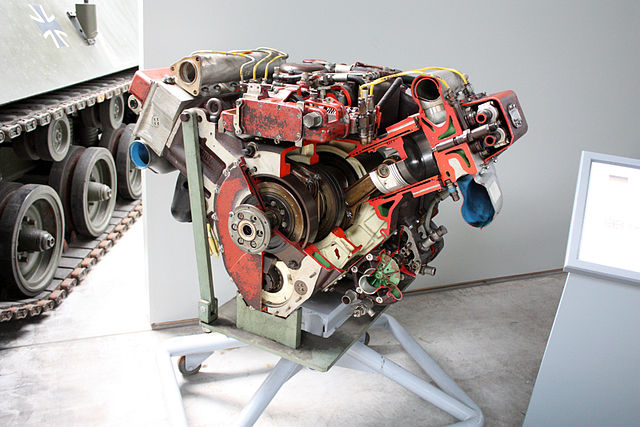
BMP-2 UTD-20/3 capable of 300 hp (225 kW) engine on display at the Panzermuseum, Munster, Germany
Turret
Located in the center of the vehicle and still made of a cone of welded steel turret, but much larger, the turret had seats for the commander (right) and gunner (left), and both are given hatches. The commander was given three day vision periscopes, 1PZ-3 day-sight (AA use) with 1-4x magnification, the OU-3GA2 IR (infra-red) searchlight, TNP-165A designator and TKN-3B binocular sight (4.75x day/4x night magnification). The gunner was given a smaller rectangular hatch with a rearward-facing day periscope. Three other day periscopes faced forward and left on the turret top. To serve the gun he was given a BPK-1-42 binocular sight with a 650m effective moon/starlight vision range, a 350 m range IR FG-126 searchlight coaxial to the main gun, plus a TNPT-1 designator.The turret could rotate on 360° with a +75°to - 5º elevation/depression. The gunner can select single shot or two automatic rates of fire: Low : 200-300 rds/min; and high : 500 rpm. However, the gun can reach 800 rpm in the high setting in certain conditions.
Armament
The main armament is the 2A42 30 mm autocannon, with some 500 rounds divided into two boxes under the gunner's and commander's seats. It was more versatile and effective, fully-stabilized, and dual-fed. This excellent cannon fired HE-I, HE-T and armor-piercing rounds. And was capable of engaging armored targets at 1 500 m range and ground targets at 4 000 m range, helicopters at up to 2 500 m. The gunner served also a coaxial 7.62-mm machine gun. Some BMP-2 received an additional 40-mm automatic grenade launcher.The turret top ATGM is the 9P135M ATGM launcher capable of firing SACLOS guided 9M111 "Fagot" (AT-4 Spigot), 9M113 "Konkurs" (AT-5 Spandrel) and 9M113M "Konkurs-M" (AT-5B Spandrel B) anti-tank missiles. Their range is 2 500 m and 4 000 m respectively. Each of these ATGM was effective against the M60 and most NATO tanks. The mount is capable of a full 360º with -5 to +15º elevation.
Production
Due to the fast-pace conception as most components were identical, the BMP-2 entered service with the Soviet armed forces in 1980 and was seen for the first time in public during a military parade on the Red Square in Moscow, in November 1982. There are no definitive records on total production by KURGANMASHZAVOD OJSC (Kurgan), as it's still ongoing for export (The vastly different BMP-3 was introduced in 1987), but it is estimated that about 20,000 has been produced for the needs of the Russian army alone, mostly to replace older BMP-1s. According to some sources, as many as 26,000 to 35,000 vehicles would have been produced so far. To this can be added or included export vehicles and license-built vehicles like the Czech BVP-2 and the Indian Sarath. Bulgaria also developed its own BMP-23 using the same turret. Incremental production modifications included a better gun stabilization system, improved internal communications, improved rubber-bushed tracks. Spare tracks have been moved to the left and right upper sidewalls of the troop compartment. A special mat to carry seriously wounded and six lying seats for the slightly wounded were also added.Main variants
- BMP-2D (D for desantnaya – assault): a variant with 6 mm thick add-on armor (turret) and spaced armor fitted along either side of the hull. It also had provision for mounting a mine clearing system under the nose.- BMP-2E: by injecting diesel fuel into the exhaust outlet on the right side of the hull.
- BMP-2K: command variant with two antennas mounted on the rear of the hull, one behind the turret and one on the right-hand side of the rear of the vehicle, one IFF antenna on the left-hand side of the rear of the vehicle and a support for a telescopic mast in the front of the IFF antenna. The firing port equipped with the periscope was removed from either side of the vehicle.
- BMP-2M: with an upgrade of armament and power pack. It also had a new track which doubles the track-life, a two-plane stabilized 30-mm cannon with an elevation increased to 70°. It was also fitted with air conditioning for desert operations. An AG-17 30-mm grenade launcher was also added on the left side of the turret. The gunner was given a thermal sight, replacing the active IR system.
- BMP-2 Kliver: Drop-in one-man turret with a 30 mm 2A72 automatic cannon and four Kornet ATGMs mounted on the right side of the turret. It also had thermal sights and improved fire control system.
- BMO-1: Transport vehicle for a flamethrower squad, armed with 30 RPO-A "Shmel" 93 mm napalm rocket launchers and dummy turret.
Options
-French ERA SNPE explosive reactive armor-Spall liners, air conditioning
-More powerful engine
-Franco-German Flame-V adaptor kit to launch Milan, Milan-2, and Milan-3 ATGMs systems.
-Russian SANOET-1 thermal gunner's sight
-Trakt/1PN65 thermal imaging (TI) ATGM night sight
-Slovenian TS-F ATGM night sight for dismounted operations (detection range 4,500 m, recognition range of 2,000 m)
-Russian Mulat/1PN86 TI ATGM thermal sight (3,600 m detection range, 2,000 m identification range)
Czechoslovakian BVP & variants
Czechoslovakia had 279 ordered in 1978, produced 1983-1989, and Passed on to the successor states. The BVP-2 (bojové vozidlo pěchoty) was the locally produced version. The BVP-2V/VR 1p (vozidlo velitele roty) were Company commander's vehicles, complete with tent, telescopic mast and two radiosets RF 1325, IPRS 32, RF 1301 and NS 2480D. The VPV (Vyprošťovací Pásové Vozidlo) was a conversion into an ARV (developed ZTS Martin Research and Development Institute) ZTS Martin plant is now in Slovakia since 1984. Powered crane with 5 tonnes capacity, heavy winch. Top turret and troop compartment hatches removed. A repair/cargo compartment replaced the rear crew compartment. The crew comprised a commander/crane operator, driver/welder/slinger and logistician/mechanic. It is armed with a pintle-mounted 7.62 mm PKT LMG.Indian Sarath
No less than 700 BMP-2 "Sarath" has been at first ordered in 1984 from the Soviet Union, delivered between 1987 and 1991 but most has been actually produced in India. A further 400 BMP-2 "Sarath" were ordered in 1985 and produced entirely in India between 1992 and 1995 at Ordnance Factory Medak of Ordnance Factories Board, under Russian license. In addition, 123 BMP-2K has been ordered in 2006 from Russia (delivered 2007-2008). 1,000+ were estimated in service in 2008 and Currently more than 1500 as of May 2013, when the Indian Army decided to upgrade all BMP-2/2K vehicles to the BMP-2M standard. In October an additional order in 2014 by the government of India added a production batch of 362 more vehicles of the Sarath type.Exports
Afghanistan (150 delivered 1987-91)Algeria (225 delivered 1990-91 plus 54 BVPs, 64 in 1998-99, and from 2005 modernization of 300 vehicles to the BMP-2M standard)
Angola (65 delivered in 1987, 7 from Hungary in 1993, 32 from Poland 1995, 62 from Belarus in 1999, 31 from Ukraine in 1999.)
Armenia (100 in service)
Azerbaijan (53 BMP-2s in service in 1992, and up to 147 registered in 2000–2006)
Belarus (1,278 in service in 1995, 1,164 as of 2005)
Ivory Coast (2 ordered in 2002 from Angola and 1 from Ukraine in 2003)
Czech Republic (200 from Czechoslovakia, and 174 on 1st January 2008)
East Germany (24 delivered 1986-1987, possibly produced in Czechoslovakia, passed on to the unified German state and sold or given to museums.
Finland (20 delivered 1988-1989, 84 more in 1992). The remaining 100 will be upgraded by 2019 as the BMP-2MD (FIN). (Integral camo netting, thermal scopes, new periscopes, display screens, internal heating, heated seats).
Georgia (40 delivered 2004-2005 previously in Ukrainian service, 120 in service currently).
Iran (1,500 ordered in 1991, but 413 delivered 1993-2001 (82 Russian-built, locally 331 were assembled). 400 are currently in service.
Indonesia (9 delivered from Ukraine in 1998, sold via Slovakia), plus 2 in 1998, 11 BVP-2s in 1999, and 40 ex-Czech BVP-2s in service in the Marine Corps.
Iraq: 200 ordered in 1986 from USSR delivered 1987-1989 (some possibly from Czechoslovakia) about 900 as of 2002, all destroyed or scrapped except one that was transported back to the USA after the First Gulf War. It is now on display at the Virginia War Museum. It was in a running condition when it arrived.
Jordan (31 delivered)
Kazakhstan (Currently 300 in service).
Kuwait (245 delivered 1989-1990, some have been captured or destroyed by the Iraqi forces. 46 more delivered 1994-1995, 76 in service as of 2005.)
Kyrgyzstan (101)
Macedonia (11 from Ukraine delivered in 2001)
Poland: 62 BMP-2/2Ds designed BWP-2, delivered in 1989. Sold to Angola 1994-1995.
Russia: 2,750 IFVs (BMP2, 2 and 3 combined) currently in active service, 6,500 in reserve.
Sierra Leone (4 delivered 1992, second-hand, 12 currently in service).
Slovakia (93)
Sri Lanka (4 from Ukraine delivered in 1994, 36 more delivered in 2001)
Sudan (6 from Ukraine delivered 1996, 9 from Belarus in 2003).
Syria (100 delivered 1987-1988)
Tajikistan (25 in service as of 2005)
Togo (20 in 1996 from an unknown supplier, possibly Poland)
Turkmenistan (538 BMP-1/2s in service as of 2005)
Uganda (31 from Ukraine delivered 2004-2005)
Ukraine (1,460 in service in 1995, Currently about 1,400)
Uzbekistan (270 in service as of 2005)
Vietnam (150 from USSR, delivered 1982-1984, 600 currently in service).
Yemen (100 from Ukraine, delivered 2003-2004, plus 180-188 BMP-2Ds delivered 2004-2005, currently 334 in service).
Service history
The BMP-2 was first used in April 1981 with Soviet forces in Afghanistan. It participated also in the Zapad-81 exercise in September 1981. STANAG designator was BMP M1981, later changed to the actual Soviet designator BMP-2.Outside USSR and later Russia operating this vehicle as recently as in the Donbass conflict (opposed to Ukrainian BMP-2s) in 2014-2015, the BMP-2 was also used in the Iran-Irak conflict, Angolan civil war, Tajikistan and Yemen civil war, second Congo and Georgian civil war, Gulf war, both Chechen wars, 2001 Afghan war and 2003 Iraq war.
It has been used in the South Ossetian war, Abkhazia, Nagorno-Karabakh and Syrian civil wars. Outside modernized and locally produced Czech BVP-1 and Indian Sarath, Israel apparently reused some with alteration like local powerpacks and transmissions and maintenance improvements for desert warfare.
Limitations
The BMP-1 shortcomings, transmitted to the BMP-2 only became obvious during the war in Afghanistan. The one-man-turret and driver-commander tandem layout were vulnerable to tilt-rod anti-tank landmine blasts under the chassis usually killed both the driver and commander. This was addressed in the BMP-2 design (tank commander sharing the two-man turret with the gunner). The driver's station was enlarged and given an armoured seat as well as extra belly-armour in the lower front.The BMP-2's frontal armour was vulnerable to the most recent .50-calibre SLAP (Sabotted Light Anti-armour Projectile) 25 mm cannon of the US M2 Bradley MICV or the British GKN Warrior IFV's 30 mm RARDEN. The rear doors filled with diesel were vulnerable to incendiary rounds. Typically with time and usage, these were drained before entering combat.
The hull easily could also be penetrated by any shaped-charge missile, as the 66 mm LAW and all upper ATGMs. However experience in Afghanistan led to fit of a second layer of stand-off armour, high resistant ballistic rubber-like material, used as spaced armour around the top of the hull sides.
BMP-1 related links & sources
The BMP-2 on WikipediaOn military-today
Army-Recoignition
Army Guide
On inetres.com
On militaryfactory.com
"BMP Infantry Fighting Vehicle 1967-94" By Steven Zaloga, Peter Sarson
BMP-2 specifications |
|
| Dimensions (L-w-h) | 6.73 x 3.15 x 2.45 m (22.1 x 10.4 x 8 ft) |
| Total weight, battle ready | 14.3-15.8 Tons short (31,500 lbs) |
| Crew | 3+7 (Cdr, driver, gunner, 7 infantry) |
| Propulsion | UTD-20S1 diesel, 300 hp (224 kW), 21.3 hp/t |
| Suspensions | Torsion bars, shock absorbers |
| Speed (land/x-cty/water) | 65/45/7 km/h (40/28/4 mph) |
| Range (road/off road) | 600 km (370), 462 l |
| Armament | Main: 30 mm 2A42 automatic 300? rds ATGM launcher 9M113 Konkurs ATGM (4 rounds) Sec. PKTM 7.62 mm (0.3 in) LMG, 2000 rounds |
| Armor | 6 to 33 mm (0.24-1.30 in) |
| Total production (USSR alone) | Approx. 20,000+ |

BMP-2, 1982 Moscow parade

BMP-2 in Afghanistan, early 1980s

Afghan BMP-2

Algerian BMP-2

Armenian BMP-2

Russian BMP-2a in South Ossetia, 2008

Ukrainian BMP-2a as of 2014, Donetsk

BMP-2 in Ukrainian service - Stepan Bandera, Donetsk 2014

BMP-2 Est Germany, winter 1988 guards regiment

Finnish BMP-2

Iranian BMP-2

BMP-2 of the Kuwaiti Army

Russian BMP-2

East German BMP-2, Motorschtz. regiment 29, Rud. Ren. 9th PZD, 1988

Russian BMP-2, 1994

Indian BMP-2 Sarath

BMP-2 U422

Ukrainian BMP-2 in 2014
Gallery
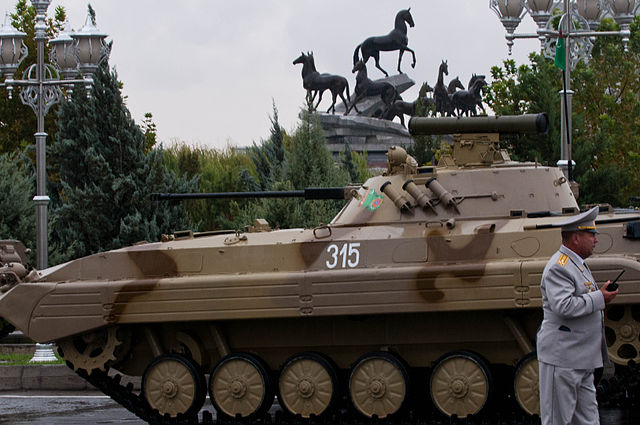
BMP-2, 20th Independence day of Turkmenistan.
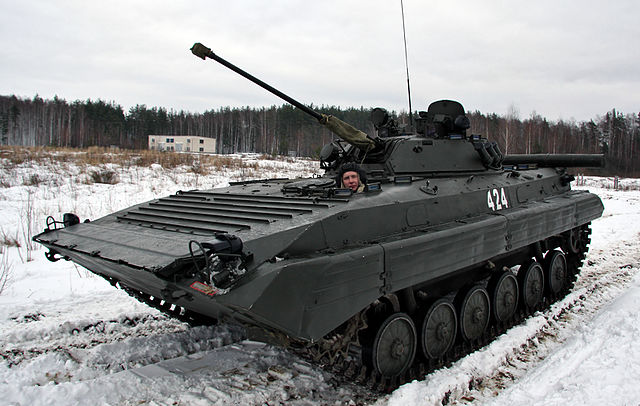
BMP-2, 467th Guards Districts Training Center
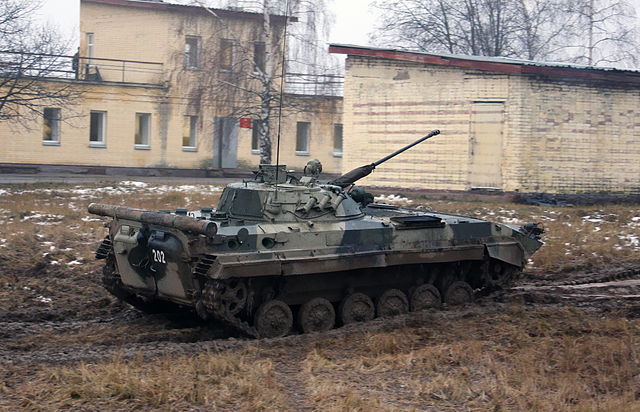
BMP-2, rear view
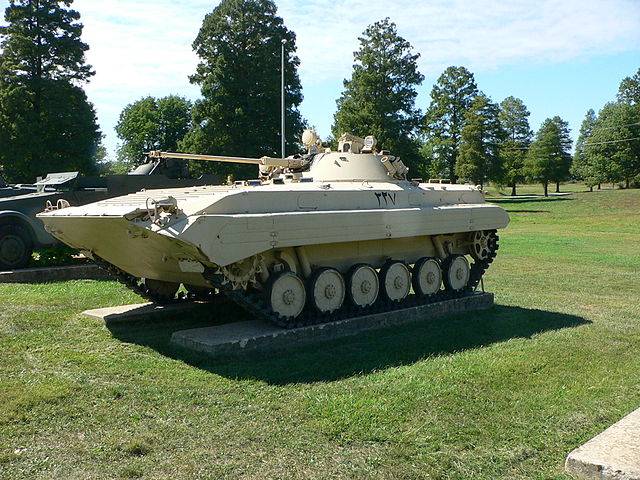
BMP-2 in Aberdeen Proving ground museum
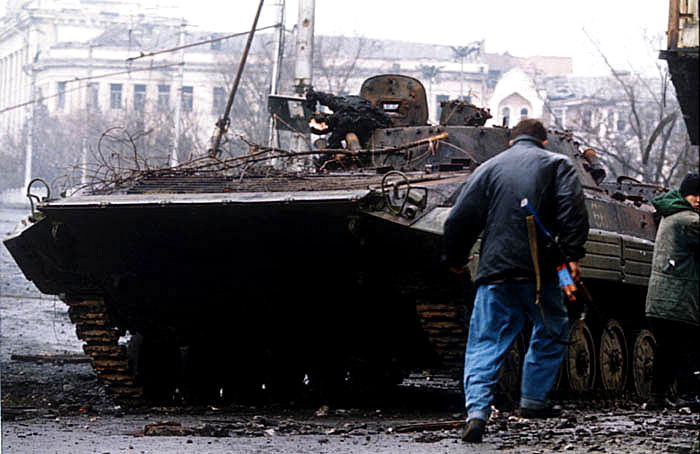
Destroyed BMP-2 in Chechnya, 2014
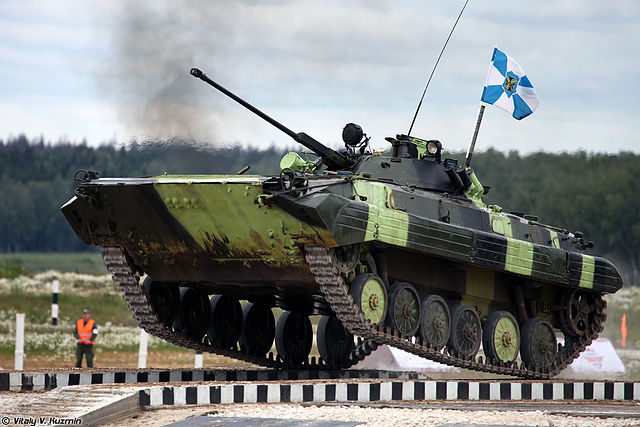
Ukrainian BMP-2, Tank Bihatlon, 2014
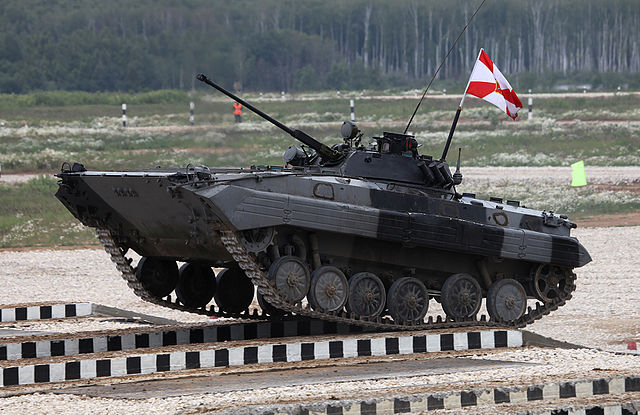
Ukrainian BMP-2 Tank Bihatlon, 2014
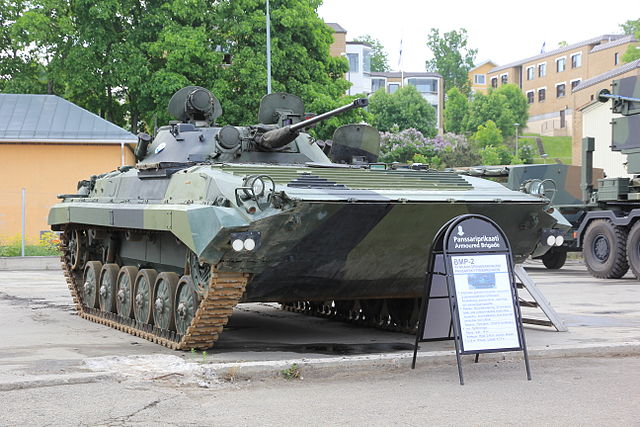
Finnish BMP-2 front view
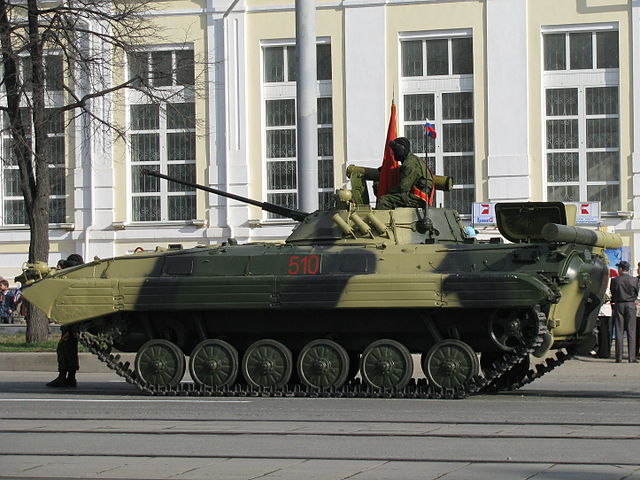
Russian BMP-2
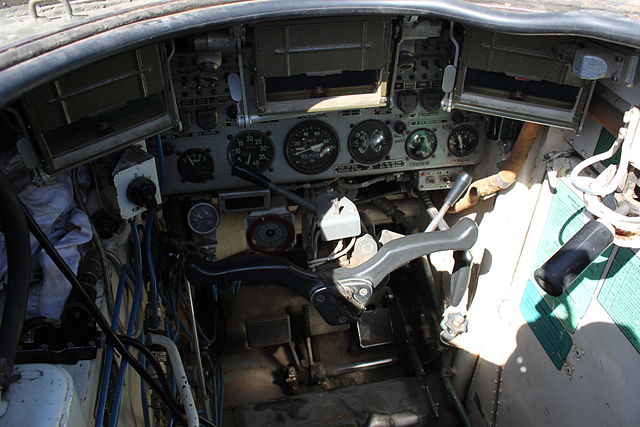
BMP-2 driver's compartment view, Thiendorf, 2010.
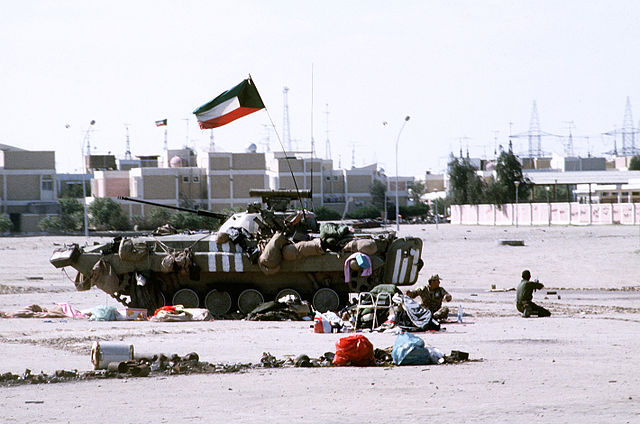
Kuwaiti BMP-2, 1990
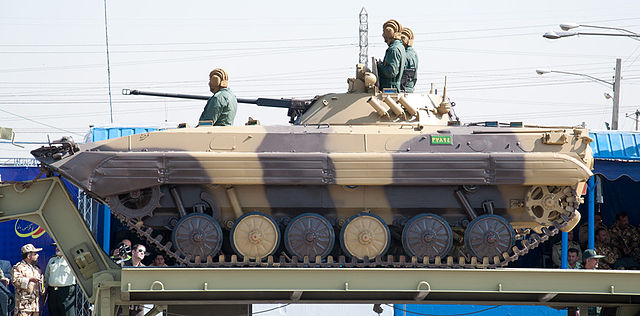
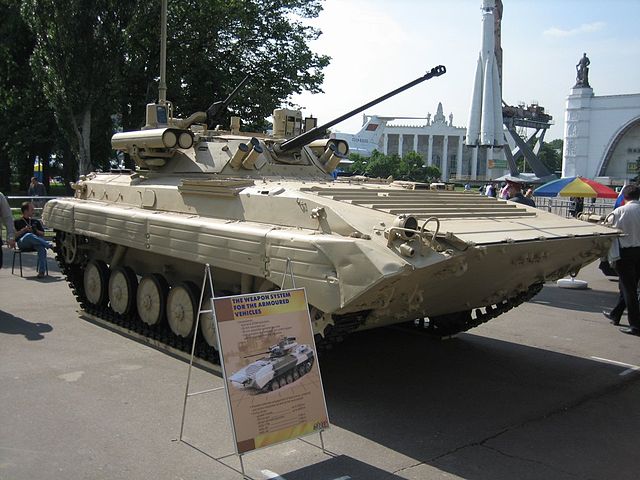
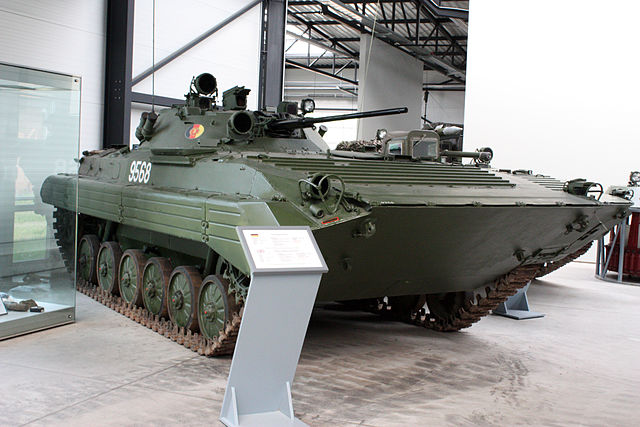
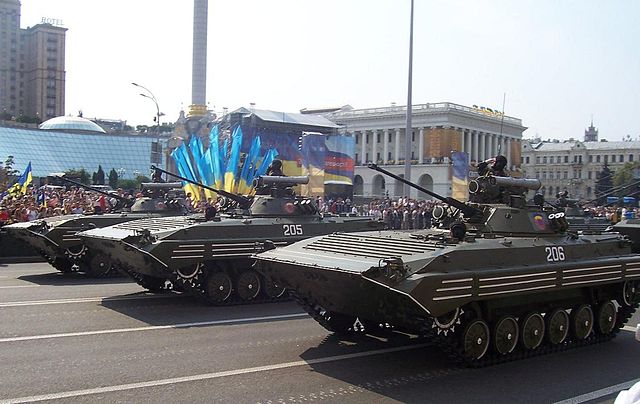
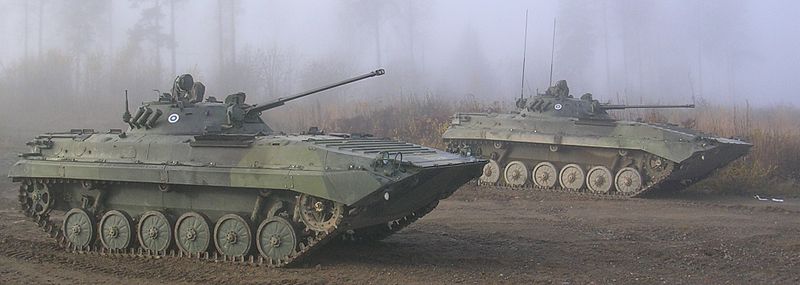
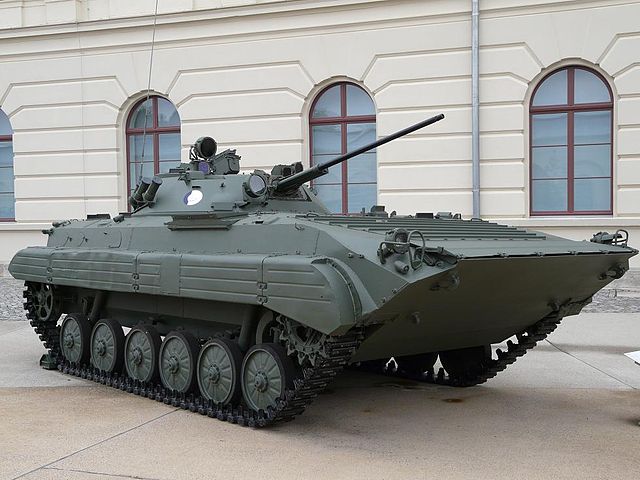
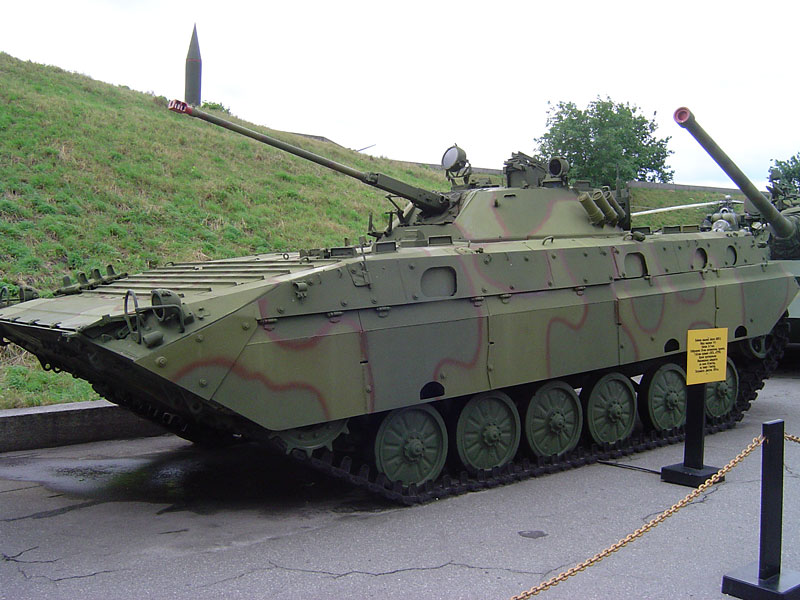
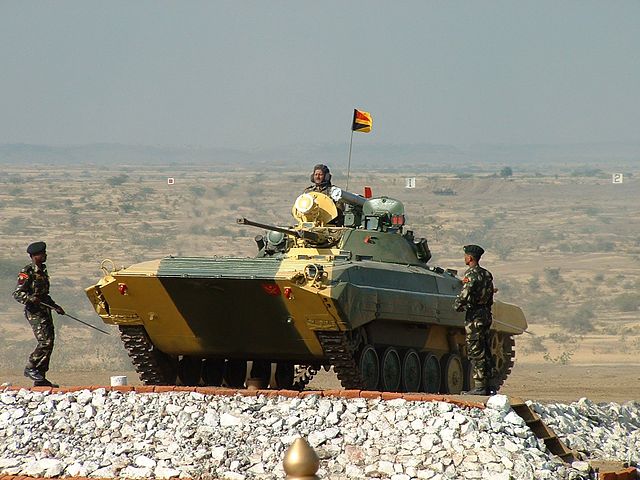
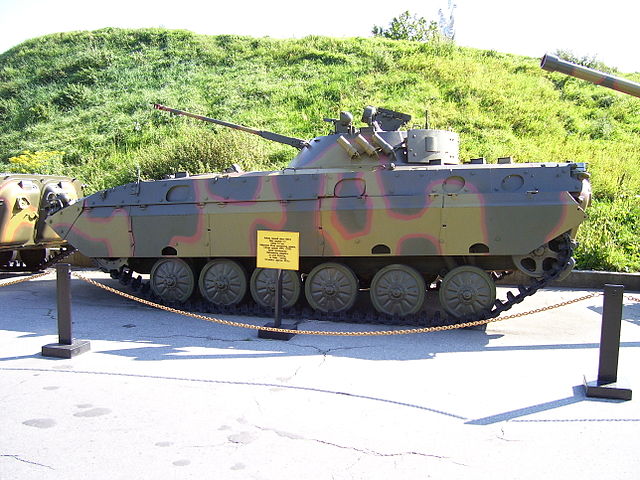
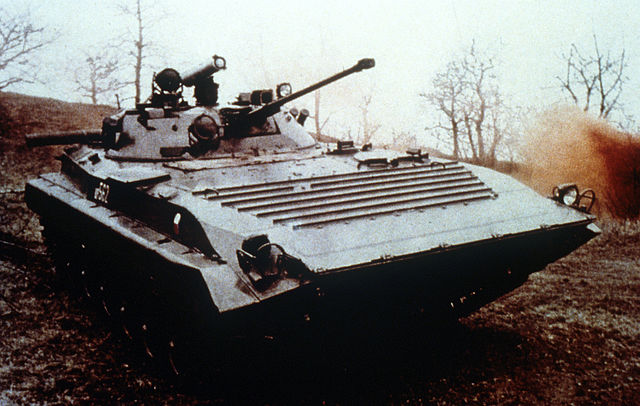
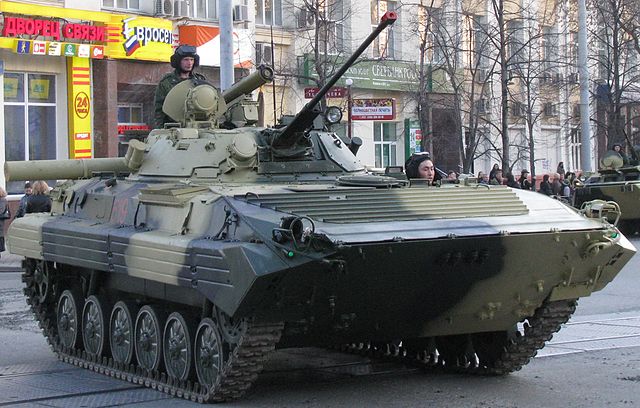
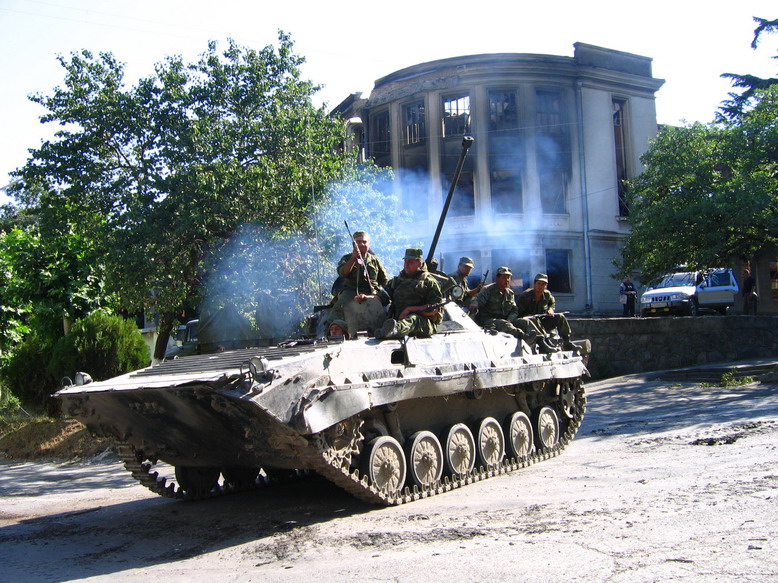
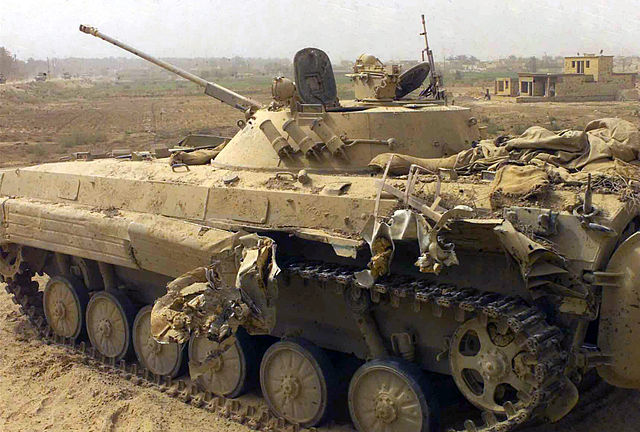
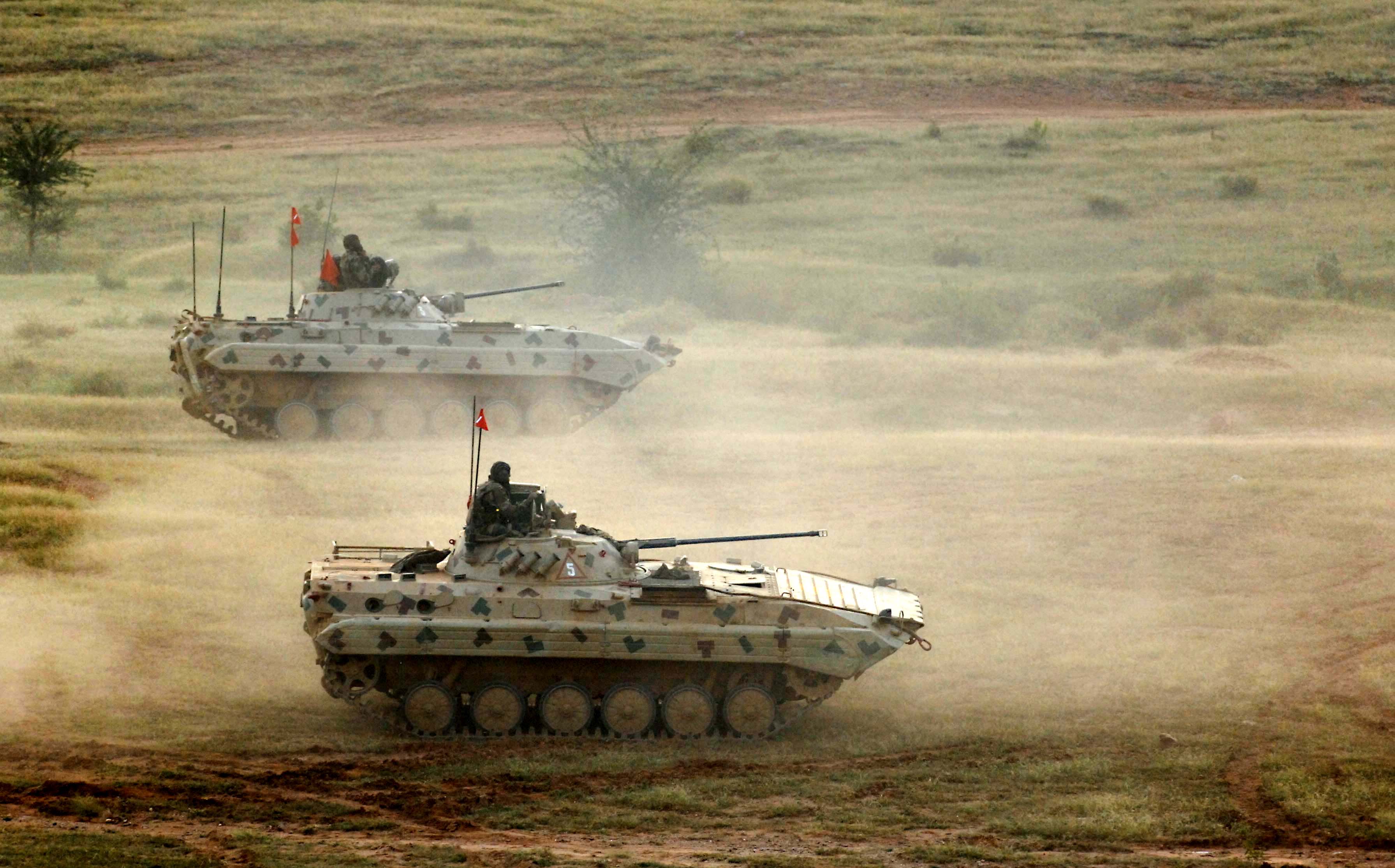

Cold War Tanks


































Cold war tanks posters

Cold War Main Battle Tanks

Cold War Soviet Army

